On farm financial implications of research into varieties and deep soil amelioration
Author: Peter and Hazel McInerney (3D-Ag, Wagga Wagga) | Date: 16 Feb 2021
Take home messages
- Know what is happening to depth, in the soil under your feet
- Grow varieties adapted to the soil type and landscape
- Deep placement of ameliorants has good potential to significantly improve yield and therefore revenue in tough seasons
- Deep placement of ameliorants is very likely to be commercially viable on responsive soils.
Introduction
This paper should be read in conjunction with the research papers produced from GRDC projects DAV00149 & UA00159 .
The purpose of this paper is to examine those results for the financial implications to the farmer of two aspects of the above projects, with reference to the farm at Rand hosting the trial site regarding: 1 varietal choice specific to soil type; 2 the potential of deep soil amendment.
With the ever-present cost price squeeze and land prices increasing rapidly, all things that might improve productivity and returns need to be examined carefully in terms of a specific farm and circumstances. Any activity that improves soil condition and resilience can help mitigate production and therefore business risk, leading to more capacity to deal with seasonal volatility. For example; being able to sustain profit even in tough years is a measure of a sustainable farm business.
Varietal screening trial results are a readily available means for farmers to help identify potentially superior varieties to test on their own farms against currently used varieties. Buying the most appropriate variety is a very low cost means of improving potential outcomes.
Deep placement of ameliorants is an emerging technology where the financial implications could have great relevance to farm businesses going forward.
These aspects are ultimately reviewed from the broader farm perspective.
Background
From 2015 to 2017 Dr Tavakkoli and associates conducted a variety screening trial (GRDC project UA00159) at Rand. From 2017 to 2020 this same site hosted the deep soil amelioration experiments (GRDC project DAV00149). Data from these trials is reviewed below and examined in terms of the financial implications to the farmer regarding variety choice and the potential of deep soil amelioration.
On the farm where the trial site is located, the farmer/co-operator has invested in understanding his soil by having the entire property zoned and soil sampled to depth to identify areas most in need of remediation. The soil is sodic with dispersion issues from the surface to depth. In the past, gypsum, lime and animal manures have been applied to improve surface conditions.
Until recently little could be done to address issues deeper (>15cm) in the soil, however this research and the construction of a machine capable of the deep placement of ameliorants will see the research tested at paddock scale in 2021.
Discussion
1. Varietal choice
Variety screening for acid soil tolerance has been routine for over 40 years with the very successful variety Dollarbird, followed by Diamond bird released in the 1980’s, with other varieties since. No such program existed for sodic or alkaline subsoils, which occupy a large area of the southern wheat belt. McDonald (2012) was among those suggesting that some varieties might possess genetic traits that were more tolerant of hostile subsoil. In 2015 Project UA00159 began with a site at Rand, NSW, and others subsequently.
The trial at Rand showed spectacular results, with the variety Mace averaging 5.5 t/ha over the three years, almost 0.75 t/ha more than any other variety (Tavakkoli E., pers.comm.). In 2018 AGT donated 1.0 tonne of Scepter (variety A in Figure 1), a new variety of a genetically similar line to Mace for the farmer to try as a commercial comparison. One tonne of Beckom (variety B in Figure 1) was purchased to include in the comparison.
Both varieties performed well and were incorporated in the farm program in 2019. Figure 1 shows the results achieved in 2019 and 2020. In the very dry 2019 season Scepter was harvested, while the Beckom was ‘salvaged’ as silage and hay. Given the season, both varieties were successful in producing revenue for the business. In 2020 both varieties again did well, although Scepter is clearly well ahead and much more profitable at the Rand site. While Scepter out-performed Beckom at this site, Beckom is still an excellent variety.
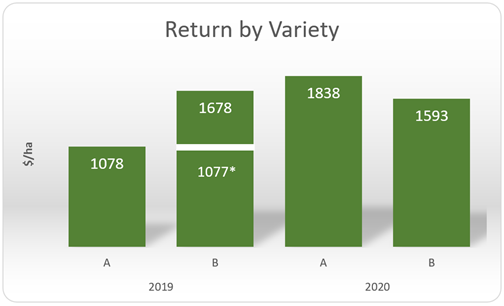
Figure 1. Return by variety 2019-20 (Variety A = Scepter, Variety B = Beckom)
*Note: The return of Variety B in 2019 after deduction of contracting costs for silage and hay making and the estimated loss of nutrients by product removal is reduced from $1678 to $1077/ha.
Making the most of available information, plus small scale on farm comparative trials to identify superior varieties is an obvious and low cost means of optimising productive potential and profit.
2. Deep soil amendments
Out of twelve different amendments, both surface and deep applied, from the Rand trial, five deep treatments are reviewed below, namely
- Treatment 1 - Deep pea straw + gypsum + [Nitrogen - Phosphorus – Potassium] (NPK)
- Treatment 2 - Deep ripping
- Treatment 3 - Deep placement of pelletised wheat straw
- Treatment 4 - Deep gypsum and
- Treatment 5 - Deep placement of pea straw.
In viewing the data, consideration needs to be given to crop type and seasonal conditions. In terms of rainfall, 2017 was a decile 5 or median year, 2018 and 2019 were both decile 1 years (i.e., in the lowest 10% of annual rainfall records for Walbundrie since 1880), while 2020 was a decile 7.
Figure 2 shows the percentage yield change from the control treatment in 2017 through to 2020 and Figure 3 shows the $/ha impact over the same sequence of years and crops. The prices used are the actual price the farmer received in the year concerned.
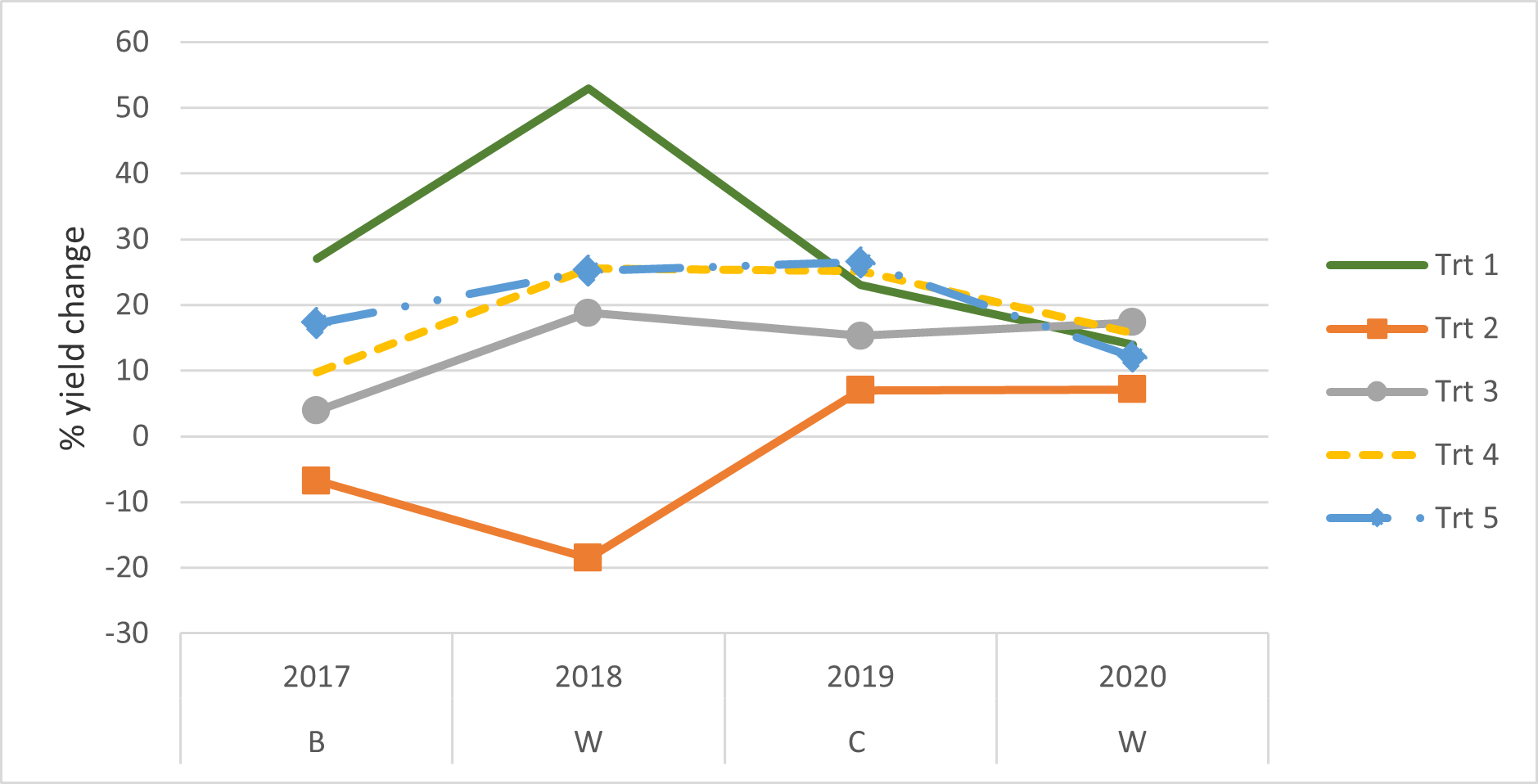
Figure 2. % yield change of each treatment
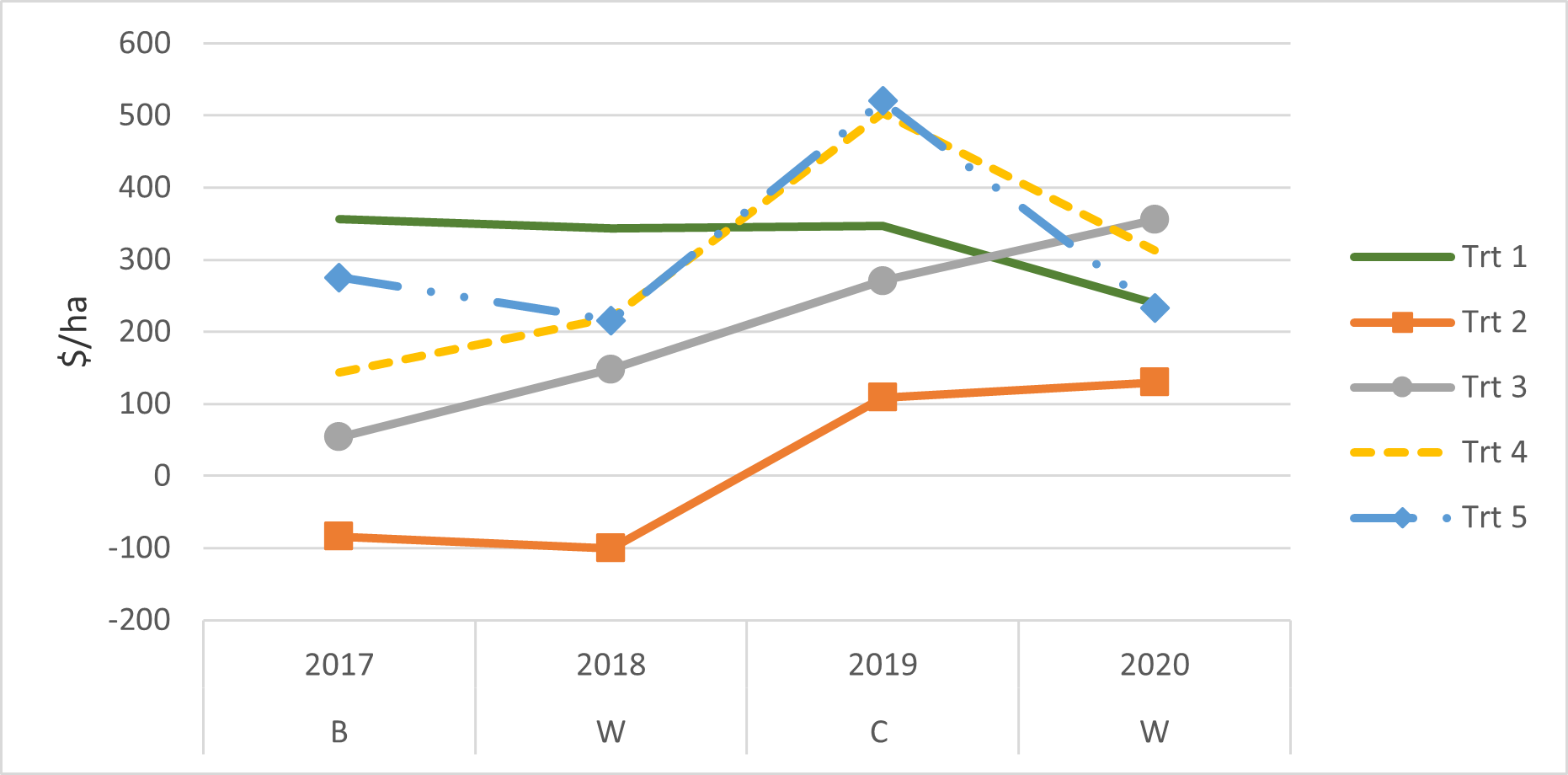 Figure 3. The financial impact of each treatment
Figure 3. The financial impact of each treatment
Results
From the research outcomes, of note is some strong positive responses in the decile 1 seasons (2018 and 2019) which ultimately translates to an enormous financial benefit to a farm business’ bottom line. Specifically;
Treatment 1
Deep pea straw + gypsum + NPK - showed outstanding results in the first three years of the trial and a solid performance in the high yielding decile 7 year of 2020. Although this treatment ranked best on a dollar basis, out all the treatments (not just the deep treatments) it may not be easy to replicate on a commercial basis.
Treatment 2
Deep ripping is included because it is still practiced at an industry level, although most evidence points to it being ineffective in sodic soils. It does however still have a place in removing compaction. This highlights the need to ensure a thorough understanding of the physical and chemical properties of a soil to depth before deciding on a course of remediation.
At the sodic Rand site, deep ripping shows a negative response in the first two seasons and every dollar lost hurts the bottom line, particularly in a tough decile 1 season such as 2018. Ranked last of the five deep treatments reviewed.
Treatment 3
Deep placement of pelletised wheat straw. Pelletising this resource for use on farm for deep amelioration has potential. In Figure 3 this treatment shows the $/ha trend line increasing in each of the four seasons of data available, however is overall ranked 4th of the five treatments reviewed.
Treatment 4
Deep gypsum is included as it is commercially available and is used successfully in surface amelioration, in appropriate soil types.
At the Rand site the deep gypsum seems to be producing good yield increases at least initially. Ranked 3/5.
Treatment 5
Deep placement of pea straw - while peas will not be grown on all farms, other pulse crop residue may be able to be substituted, for example in the case of the farmer/co-operator the pulse residue is likely to be faba bean stubble. Pellets of pulse, as with cereal stubble is promising by virtue of its availability and relative simplicity to prepare and use. Ranked 2/5
To draw out the financial impacts for the farmer, the following discussion will be about money, not economic theory. In economics, the utility value of a dollar, is almost always a dollar. In farming, the dollar that helps the business scrape into profit in a tough year assumes near magical properties.
Remembering profitability on farm is largely driven by YIELD x PRICE and the factor that the farmer has the greatest capacity to manipulate is yield potential. This means that every opportunity to increase yield, cost effectively, should be examined and the cost:benefit tested on farm.
Table 1 below contains four years of yield data from the trial, derived by averaging the results of the four replicates. The financial outcomes (price per tonne) are based on the grain price achieved by the co-operating farmer for the year concerned.
Table 1. Yield and grain prices over the four years of the trial
Year | 2017 | 2018 | 2019 | 2020 |
|---|---|---|---|---|
Crop | Barley | Wheat | Canola | Wheat |
Yield of control t/ha | 4.89 | 1.6 | 2.38 | 6.9 |
Yield of Trt 1 | 6.21 | 2.46 | 2.92 | 7.88 |
Price $/t | $270 | $385 | $605 | $245 |
Calculations based on this information show that in the Decile 1 season of 2018 Treatment 1 yielded 53% higher than the control treatment. In dollars this means the control treatment generated $640/ha while Treatment 1 generated $948/ha. For such a severe drought year many would consider $640/ha to be a good result, however $948/ha is a profit worthy of any year.
Resilience to drought is something that good farmers are always trying to achieve, and this work shows some very promising results. While the revenue increases look promising, the cost of achieving them can be significant and every farmer should do some on farm investigation and trial work before committing their whole program.
The costs associated with implementing Treatment 1 for example: The machine developed by the co-operating farmer and his engineer colleague, for the deep placement of ameliorants will cost around $200/ha to use. The pelletised straw, for example costs approximately $50 /t to produce and at a rate of 10 t/ha the cost is about $700/ha of upfront investment. Added to this is the cost of the NPK and gypsum if used, approximately another $200/ha.
Regarding the opportunity cost of materials, it is my view that, if the pelletised material is harvest residue from the same paddock, or the same farm, then all that is happening is that the residue is being used in a more effective way and the opportunity cost is zero.
At farm scale
Extrapolating from the research data to what might happen at farm scale - the paddock adjacent to the trial site is used to model two treatments from the trial i.e., Treatments 1 and 5 using the farmer’s actual rotation. The farmer’s actual yields for the paddock are considered as the ‘control, then using the percent increase achieved by the respective treatment and relevant year in the trial, the ‘new’ yield potential is generated. The grain prices used are the actual prices achieved by the farmer.
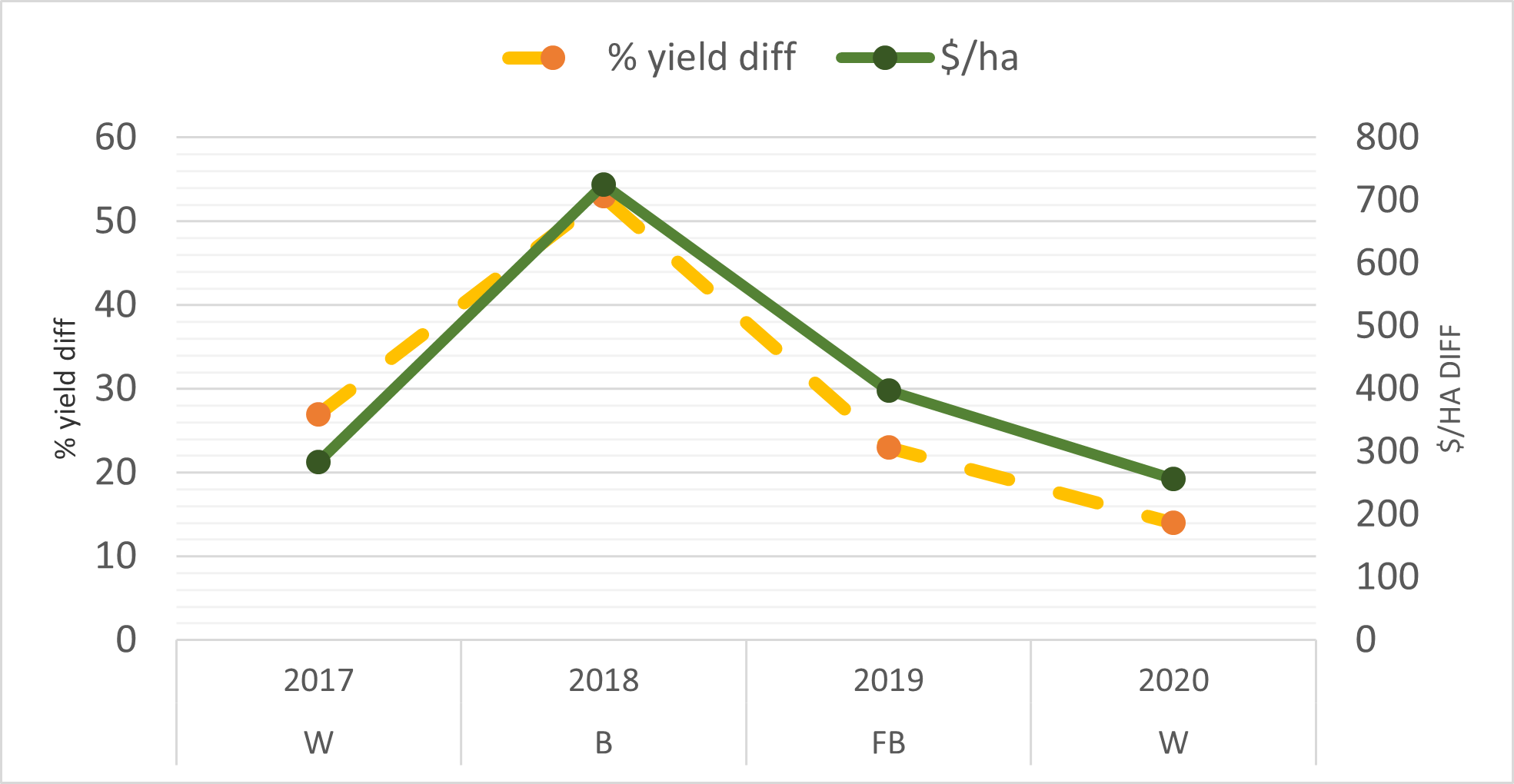 Figure 4. Estimated impact of using Trt 1 (deep placement of pea straw + gypsum + NPK) as the % change in yield and gross margin ($/ha) when compared to grower standard practice
Figure 4. Estimated impact of using Trt 1 (deep placement of pea straw + gypsum + NPK) as the % change in yield and gross margin ($/ha) when compared to grower standard practice
Benefit: The modelled revenue outcome shows a positive return to the farmer and a cumulative additional revenue stream of $1663 over the four years, with outstanding results in 2018 and 2019, which were the toughest years.
Cost: Blending and applying pea straw, gypsum and NPK, would cost approximately $900/ha producing a net benefit of $773 over the four years. It is unclear however how easily this treatment could be done on farm and additional equipment and/or time might add to the cost.
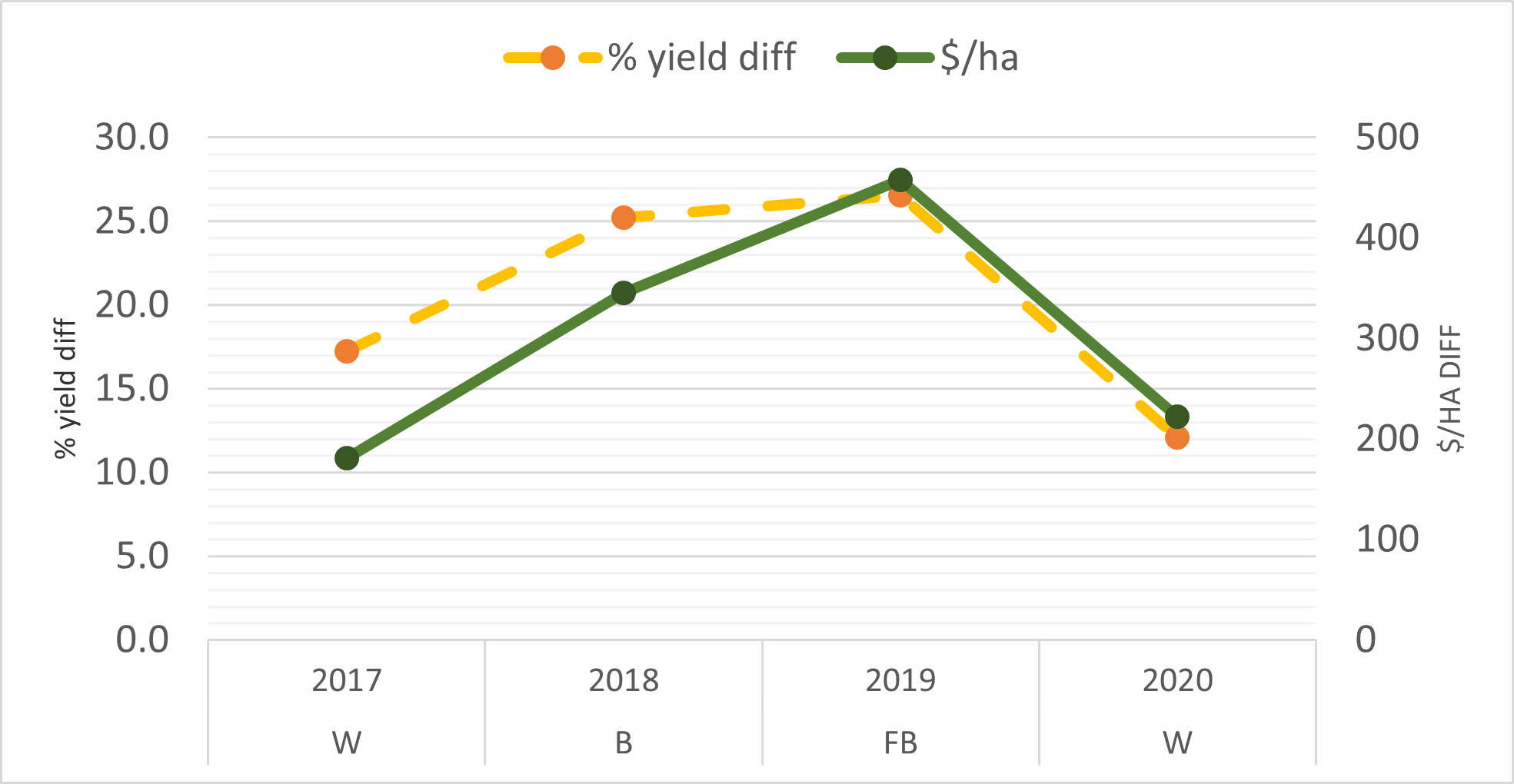 Figure 5. Estimated impact of using Trt 5 (deep placement of pea straw) as the % change in yield and gross margin ($/ha) when compared to grower standard practice
Figure 5. Estimated impact of using Trt 5 (deep placement of pea straw) as the % change in yield and gross margin ($/ha) when compared to grower standard practice
Figure 5 models pelletised pulse straw alone which should be easier for most farmers to make.
Benefit: A cumulative benefit of $1207 over the four years.
Cost: Projected as approximately $700/ha producing a gross surplus of $507/ha.
While only four years of trial data have been collected, we expect yield benefits to continue for several years into the future, making deep soil amelioration financially viable on responsive soils.
References
McDonald, G. K., McDonald, G. Taylor, J. D., Verbyla, A., and Kuchel, H. (2012). Assessing the importance of subsoil constraints to yield of wheat and its implications for yield improvement. Crop & Pasture Science 63, 1043-1065.
Shihab Uddin et. al. (2021) Amelioration of hostile subsoils via incorporation of organic and inorganic amendments and subsequent changes in soil properties, crop water use and improved yield, in a medium rainfall zone of south-eastern Australia. GRDC Grains Research Update, Wagga Wagga February 2021.
Contact details
Peter McInerney
3D-Ag
Ph: 0428 317 746
Email: peter@3D-Ag.com.au
Varieties displaying this symbol beside them are protected under the Plant Breeders Rights Act 1994.
Was this page helpful?
YOUR FEEDBACK
